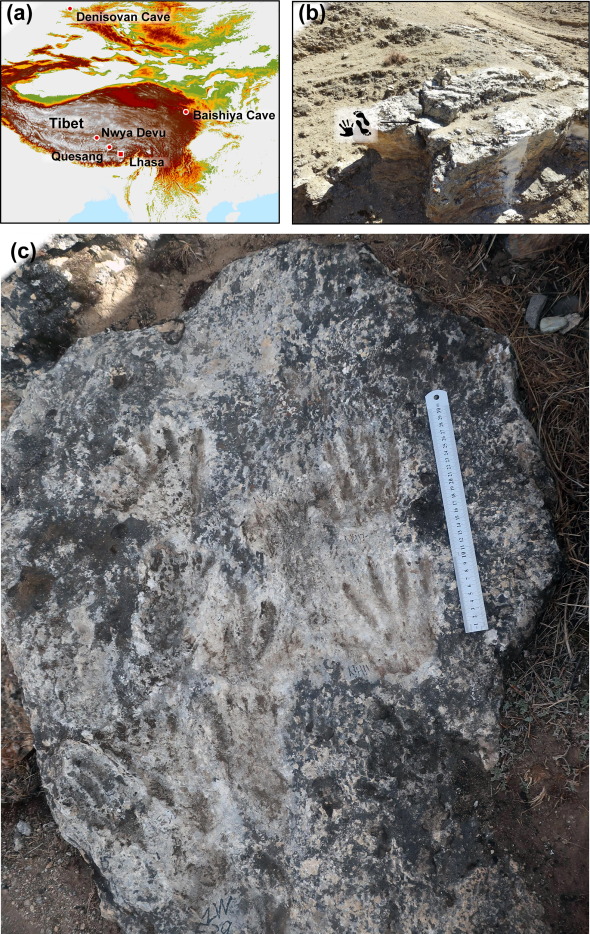
This is an interesting piece of news that we would like to share and comment. Some days ago this article here reports that “Archaeologists Discover 200,000-Year-Old Hand & Footprints That Could Be the World’s Earliest Cave Art”.
Very interesting, indeed?
Reading this and other sources it is clear that the finding, in in Quesang Hot Spring on the High Tibetan Plateau (average elevation above 4,500 metres), 80 km from Lhasa, consists in “five handprints and five footprints dating to the Middle Pleistocene near the base of a rocky promontory”. These footprints would be dated between 69,000 and 226,000 years ago!
If confirmed, it would be the first rock art act ever.
According to the scholars who investigated it, this was a deliberate act made by young males (7 and 12 years old).
The debate switched to the term “rock art”. Is this rock art? Or a child game?
In the piece of news linked in our first paragraph you can read that not all the scholars agree and dr Zhang (main field investigator on this story) remembers that “such arguments are predicated on modern notions of what constitutes art, driving his point home with an appropriately stone-aged metaphor: When you use stone tools to dig something in the present day, we cannot say that that is technology. But if ancient people use that, that’s technology”.
We fully agree with him. The concept of “art” has always been linked to the cultural perspective of the humankind. Who can says what art is and what is not? We are not great lovers of “contemporary art”, but apart our personal approach, it is quite sure that “contemporary art” would have not been named as art some decades ago!
Moreover, we should add here also the concept of “playing” as a peculiar human act, therefore expression of the humankind. Is an “expression” of our culture, “art”? We think yes, therefore a “game” is “art and those footprints can be considered the oldest rock art ever”.



